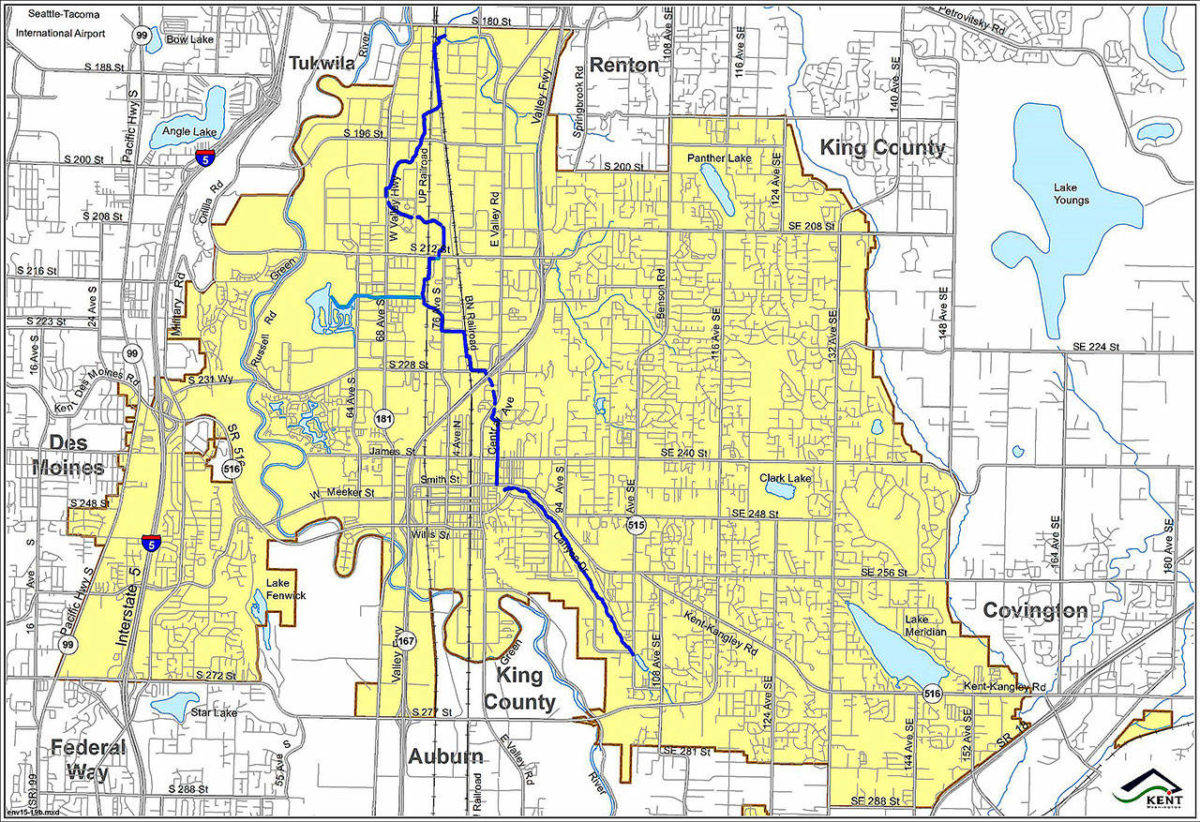It’s going to take the city of Kent several more years and as much as $20 million before it resolves the James Street flooding.
As the heavy rains showed the first two weeks of 2021, city crews still have to close the well-used East James Street in the Valley between Central Avenue North and Woodford Avenue North because of water over the roadway from Mill Creek.
The city spent $2.3 million in 2016 to replace the James Street stormwater pump station near the bottom of the James Street hill to divert water to the Green River. That project has reduced flooding, but has not stopped it. The city also recently completed a $9 million improvement to the Upper Mill Creek Dam, near Southeast 267th Street and 104th Avenue SE, to reduce flooding and restore salmon populations, including significant costs for mitigating environmental impacts of the project.
All of that has helped. But the Mill Creek Reestablishment Project, a dredging of the creek to remove sediment built up over the decades, still remains to be done.
“The Mill Creek Reestablishment Project is planned for a three to five year completion, which includes time to acquire federal permits and additional property rights necessary to complete the work,” Interim Public Works Director Chad Bieren said in an email. “It could go beyond that time frame if property negotiations take longer than anticipated or permits are delayed. We are working on it as one of our highest priority projects.”
The groups that must sign off on the project include the U.S. Army Corps of Engineers, the state Department of Fish and Wildlife, the state Department of Ecology and the Muckleshoot Indian Tribe. The city also needs an environmental permit for the dredging from the Army Corps.
City staff estimated the cost of the dredging project along 3 miles of the creek at about $10 million a few years ago. That cost has gone way up.
“Total project costs for Mill Creek Reestablishment are estimated at $15 million to $20 million,” Bieren said. “It’s expensive to remove stream sediment and truck it off site. Then when you add required environmental mitigation, the project costs really increase. However, the project is necessary for the long-term health and sustainability of Mill Creek.”
City leaders had hoped to start the dredging in 2020, but the permit process has delayed the project. City leaders also must figure out how to pay for it, with a large portion expected to come from the city’s storm drainage fee paid by residents and businesses. Residents pay a monthly fee of $13.12. Commercial businesses and multi-family complexes pay a fee based on impervious surfaces.
Other flood projects
City staff also has plans to reduce flooding along Southeast 256th Street near 148th Avenue SE and along 148th Avenue SE between SE 256th and SE 249th streets.
“The existing culverts over Big Soos Creek are undersized for fish passage, and nearby roadways are too low for high water flow in the creek,” Bieren said. “When the crossings at SE 256th Street and 148th Avenue SE are reconstructed, the existing culverts will need to be replaced with bridges, and the roads will need to be raised to allow for future infilling of Big Soos Creek.”
That’s two more lengthy and expensive projects for the city.
“We do not have current cost estimates for these projects, but based on work we have done in the past it would likely cost between $10 million and $15 million for each crossing,” Bieren said.
Mill Creek dredging remains the top priority for the city.
“There are plans to replace the street crossings of Big Soos Creek; however, they are planned after we complete Mill Creek improvements due to budgeting,” Bieren said.
Bieren also said at a Kent City Council workshop Jan. 5 that those projects are a lower priority because they are on the edge of town.
Talk to us
Please share your story tips by emailing editor@kentreporter.com.
To share your opinion for publication, submit a letter through our website https://www.kentreporter.com/submit-letter/. Include your name, address and daytime phone number. (We’ll only publish your name and hometown.) Please keep letters to 300 words or less.

